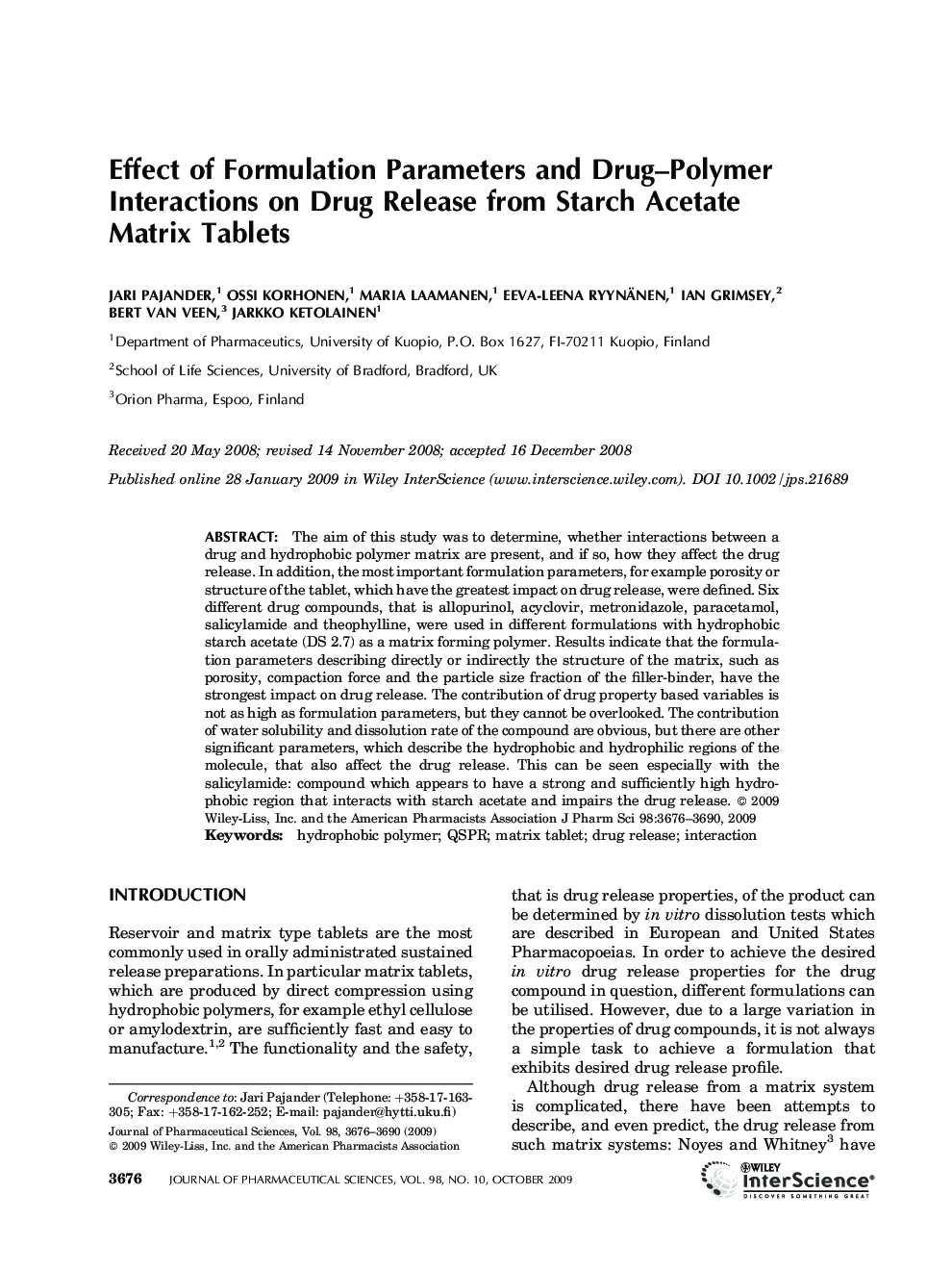| Article ID | Journal | Published Year | Pages | File Type |
|---|---|---|---|---|
| 2486389 | Journal of Pharmaceutical Sciences | 2009 | 15 Pages |
Abstract
The aim of this study was to determine, whether interactions between a drug and hydrophobic polymer matrix are present, and if so, how they affect the drug release. In addition, the most important formulation parameters, for example porosity or structure of the tablet, which have the greatest impact on drug release, were defined. Six different drug compounds, that is allopurinol, acyclovir, metronidazole, paracetamol, salicylamide and theophylline, were used in different formulations with hydrophobic starch acetate (DS 2.7) as a matrix forming polymer. Results indicate that the formulation parameters describing directly or indirectly the structure of the matrix, such as porosity, compaction force and the particle size fraction of the filler-binder, have the strongest impact on drug release. The contribution of drug property based variables is not as high as formulation parameters, but they cannot be overlooked. The contribution of water solubility and dissolution rate of the compound are obvious, but there are other significant parameters, which describe the hydrophobic and hydrophilic regions of the molecule, that also affect the drug release. This can be seen especially with the salicylamide: compound which appears to have a strong and sufficiently high hydrophobic region that interacts with starch acetate and impairs the drug release. © 2009 Wiley-Liss, Inc. and the American Pharmacists Association J Pharm Sci 98:3676-3690, 2009
Related Topics
Health Sciences
Pharmacology, Toxicology and Pharmaceutical Science
Drug Discovery
Authors
Jari Pajander, Ossi Korhonen, Maria Laamanen, Eeva-Leena Ryynänen, Ian Grimsey, Bert van Veen, Jarkko Ketolainen,
